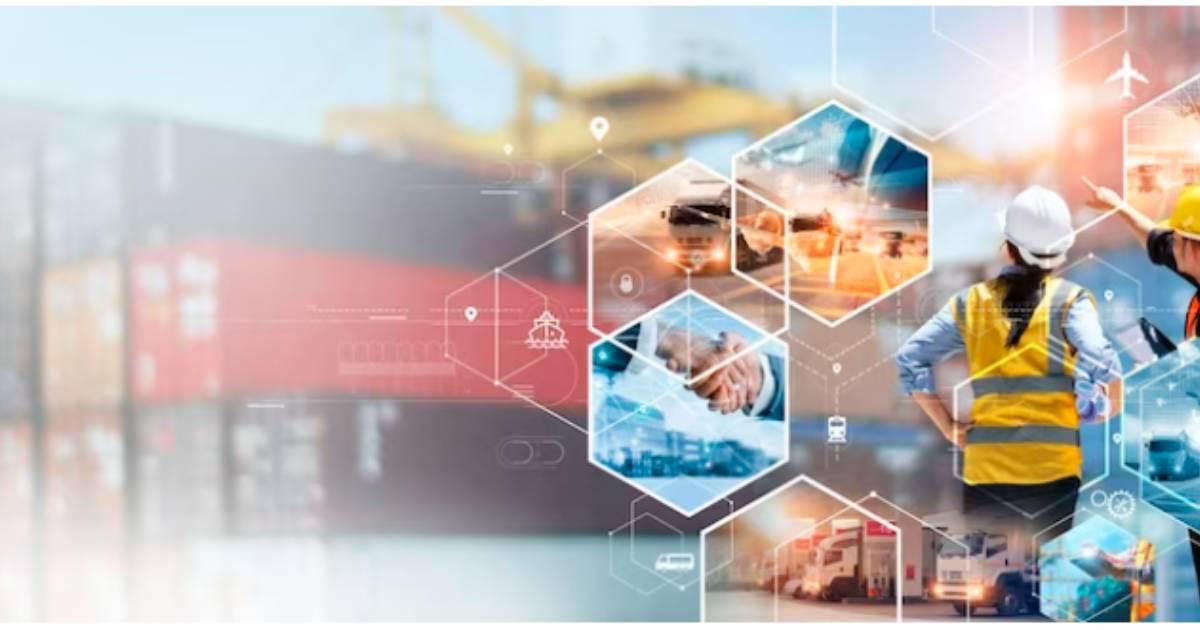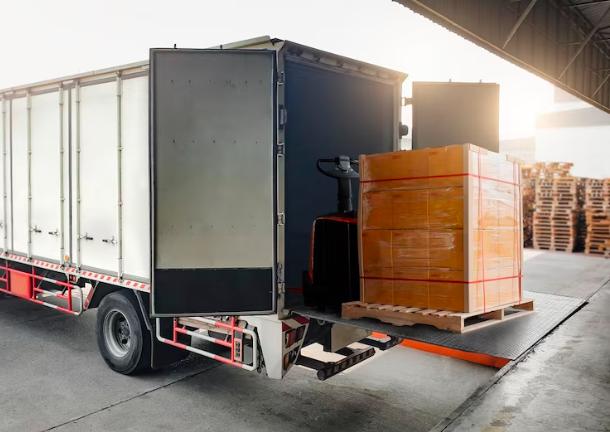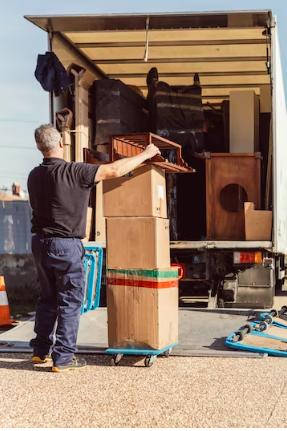
Master Cargo Logistics: Choosing the Right Fit Between PTL, FTL, and LTL Strategies
Dec 17, 2023
Explore the differences between Less than Truckload (LTL), Partial Truckload (PTL), and Full Truckload (FTL) shipping methods. Understand their cargo sizes, handling, ideal uses, benefits, and drawbacks to make informed logistics decisions efficiently.
In the ever-churning engine of global commerce, logistics is the fuel, and choosing the right truckload is the spark that ignites efficient delivery. But with a dizzying array of options – FTL, PTL, LTL – navigating the landscape can feel like a high-stakes game of Tetris with your cargo as the precious blocks. Fear not, intrepid logistics wizards! This expanded guide will equip you with the knowledge and strategies to master the art of cost-effective truckload selection, ensuring your supply chain hums with the smooth efficiency of a well-oiled machine.
The Three Musketeers of Truckloads: A Deep Dive
1. FTL: Your Cargo's Palatial Retreat
Imagine, if you will, a sprawling mansion dedicated solely to your cargo's comfort. That's the essence of FTL (Full Truck Load) – a dedicated truck, a haven for your goods to journey in uncrowded bliss. Perfect for large shipments, FTL boasts unparalleled speed and security. Your cargo basks in the luxury of direct routes, minimizing handling and potential damage. Think of it as a first-class airline experience for your goods, whisking them to their destination in record time.
But like any luxury, FTL comes at a premium. The cost of this spacious solitude can leave a dent in your budget. So, before you invest in this royal treatment, consider the size and urgency of your shipment. Is the swiftness and security worth the hefty price tag? If your cargo is a delicate porcelain statue or a batch of urgently needed medical supplies, FTL might be the knight in shining armor you seek. But for more mundane goods with flexible delivery timelines, exploring other options might be wiser.
2. PTL: The Cozy Co-op for Cargo
Picture a charming shared apartment for your goods, where smaller shipments mingle and share the ride. This is the domain of PTL (Partial Truck Load), offering a cost-effective alternative to FTL's grandeur. By combining several smaller shipments in a single truck, PTL delivers the benefits of shared expenses and flexible delivery options. Think of it as a carpool for your cargo, navigating the roads together and splitting the gas bill.
However, the PTL experience comes with its quirks. Just like any shared living space, delivery times might take a detour depending on your co-passengers. Your carefully packed boxes might encounter unexpected detours as the truck juggles multiple destinations. So, while PTL offers significant cost savings compared to FTL, be prepared for a slightly slower journey with potential for schedule adjustments.
3. LTL: The Backpackers' Hostel of Cargo
Now, imagine a bustling dorm room, a vibrant hub for small shipments seeking adventure and affordability. Welcome to the world of LTL (Less-Than-Truckload), the backpacker's hostel of the logistics world. Ideal for smaller shipments, LTL offers the most economical option, allowing you to send your cargo without breaking the bank.
But remember, budget travel comes with its own set of challenges. LTL journeys involve multiple stops, akin to navigating a crowded hallway to reach your dorm room. Your cargo might encounter fellow adventurers from diverse industries, each with their own timelines and destinations. So, while LTL offers significant cost savings, be prepared for a longer journey with increased handling and potential for delays.
Read More: Basic of LTL; Everything You Must Know

Comparing LTL, PTL, and FTL Shipping Methods
Understanding the nuances of Less than Truckload (LTL), Partial Truckload (PTL), and Full Truckload (FTL) options is crucial to making informed decisions.
LTL Shipping:
- Cargo Size: Generally smaller shipments; typically 4 pallets or less, based on NMFC classification.
- Handling & Stops: Involves multiple handling points from origin to destination; increased stops due to freight consolidation.
- Ideal for: Small to midsize shipment volume; standardized dimensions; dense freight.
- Benefits: Reduced costs by sharing trailer space; flexibility in scheduling shipments.
- Drawbacks: Increased delivery time due to handling and multiple stops; potential for product damage.
PTL Shipping:
- Cargo Size: Ranges from 5 to 20 pallets, up to 30,000 lbs, but doesn't require filling the entire trailer.
- Handling & Stops: Fewer handling points after loading; may have multiple stops but not unloaded until the final destination.
- Ideal for: High-value, fragile, low-density freight; 5 to 20 pallets without exceeding 30,000 lbs.
- Benefits: Less handling; cost advantages for high-value freight; freight rates based on weight/linear feet.
- Drawbacks: Potential delays from consolidation wait times; increased delivery time due to multiple stops.
FTL Shipping:
- Cargo Size: Larger shipments requiring the entire trailer; 20 or more pallets.
- Handling & Stops: Direct route with minimal handling, no shared trailer space, and no stops except for required breaks.
- Ideal for: Businesses with consistent large loads or quick delivery requirements.
- Benefits: Fastest shipment times, direct routes, minimal handling, and no shared trailer space.
- Drawbacks: Higher shipping costs if trailer isn't fully utilized; increased cost for smaller shipments.
Beyond the Basics: Advanced Tactics for Logistics Tetris Masters
1. Size Matters: The Tetris Algorithm for Cargo Optimization
The first principle of logistics Tetris? Analyze your cargo's dimensions! Large, bulky items might find their perfect fit in FTL's spacious comfort. Smaller shipments can nestle comfortably in the PTL caravan, while tiny packages might thrive in the bustling LTL hostel. Consider weight, volume, and fragility to determine the most efficient and cost-effective placement in the logistics puzzle.
2. Speed Demons vs. Cost Conscious Kings: Striking the Balance
Not all cargo are created equal. Some are time-sensitive racehorses, demanding the swiftness of FTL's direct routes. Others are budget-conscious explorers, content with the shared journey of PTL or the adventurous spirit of LTL. Understand your delivery timelines and budget constraints to find the truckload option that strikes the perfect balance between speed and cost.
3. Cargo Temperament: From Fragile Treasures to Rugged Adventurers
Just like travelers, cargo possesses diverse temperaments. Delicate porcelain figurines require the pampering of FTL's dedicated space, while rugged industrial equipment can handle the shared journey of PTL. Assess your cargo's fragility and special needs to determine the travel companion that best suits its nature.
Recommended Reading: Different Types of LTL Carriers & When to Use Each

Navigating the Maze: Finding the Perfect Logistics Partner
Choosing the right logistics partner feels like navigating a labyrinth – one wrong turn and your precious cargo could end up lost in the wilderness. But fear not, weary traveler! This guide will equip you with the map and compass you need to emerge victorious, your goods delivered swiftly and safely to their destination.
Step 1: Charting Your Course – Understanding Your Needs and Priorities
The first step in finding your logistics soulmate is introspection. Dive deep into the needs of your business. Consider the type of cargo you ship – are they delicate orchids or sturdy car parts? Do you need lightning-fast delivery or cost-effective options? Volume matters too – are you a high-volume shipper or a boutique operation? Time becomes critical when deadlines loom – can you afford relaxed delivery windows or do you need guaranteed express options?
Your budget is your trusty compass, guiding you towards providers that fit your financial landscape. Don't forget the map of your operations – where do you ship to and from? Are there any industry-specific regulations you need to navigate? Do you have personal preferences like environmental sustainability or a focus on emerging technologies? Once you have a clear picture of your needs and priorities, you're ready to explore the vast landscape of logistics providers.
Step 2: Surveying the Terrain – Researching Potential Partners
The logistics world is teeming with potential partners, each vying for your business. It's time to put on your explorer's hat and delve into their world. Reputation is your first beacon – scour reviews, industry awards, and client testimonials to gauge their reliability and track record.
Uncover their service portfolio – do they offer the specific needs you outlined? Can they handle your cargo type and volume? Do they have the geographic reach to traverse your shipping routes? Modern logistics rely heavily on technology – assess their infrastructure, from tracking systems to automation capabilities. Safety should be non-negotiable, so scrutinize their safety protocols and accident history. Finally, compare their cost structures – are they transparent and flexible enough to fit your budget?
Step 3: Establishing Communication – Engaging in Dialogue and Negotiation
Now that you've identified promising contenders, it's time to open the lines of communication. Initiate dialogue with these potential partners, asking questions, clarifying doubts, and expressing your specific needs. Negotiate rates and contracts, ensuring they align with your budget and service expectations. Don't hesitate to request references, seeking the experiences of other businesses who have entrusted their precious cargo to these providers. Communication protocols are vital – establish clear channels for updates, problem-solving, and dispute resolution. Remember, this is a partnership, not a one-way street.
Step 4: Building a Bridge – Cultivating a Strong and Lasting Partnership
Once you've chosen your logistics partner, the work doesn't end there. Proactive communication is the bridge that keeps your partnership thriving. Conduct regular performance reviews, gauging their service quality and identifying areas for improvement. Don't shy away from providing feedback – constructive criticism can help them elevate their offerings. Most importantly, remember that true partnerships are built on collaboration. Be open to innovative solutions and work together to overcome challenges.
Relevant Reading: 7 Key Considerations When Choosing a Warehouse Location for Your 3PL Business
How Driver Logistics Helps
At Driver Logistics, we offer an extensive range of services tailored to address the complex needs of diverse industries. Here's how our services cater to your specific requirements:
1. Advanced Warehousing Services
Our user-friendly warehouse management strategies revolutionize inventory handling. Say farewell to manual processes; embrace automated solutions that streamline operations. Experience real-time inventory tracking, seamless order fulfillment, and integration with systems like ERP and TMS for a synchronized supply chain.
Dedicated Warehousing: Opt for a warehouse solely dedicated to your business for long-term commitment, ensuring consistent service quality and optimized operations.
Shared Warehousing: Flexible contracts cater to changing needs, allowing multiple clients to share resources and manage costs efficiently.
2. Part Truck Load (PTL) Services
Reduce transportation expenses by consolidating smaller shipments into one, offering a cost-effective alternative to full truckload shipping. Benefit from our expertise in consolidating shipments across Kerala while contributing to environmental sustainability.
3. Full Truck Load (FTL) Services
Experience operational excellence with FTL services tailored to your needs. Overcome capacity constraints, optimize costs, and ensure agile responses to varying demands without compromising service quality.
4. Digital Technology Services/Features
Fleet Management System (FMS): Efficiently plan routes, minimize detours, and save fuel costs with intelligent route planning and real-time monitoring, ensuring optimal fleet utilization.
Transport Management System (TMS): Streamline transportation activities, access online documentation, and facilitate seamless coordination with transport providers for enhanced efficiency.
5. Transform Your Business with a Trusted Logistics Partner (4PL)
Partner with us to embrace a transformative journey into the future of logistics. Benefit from our advanced 4PL solutions powered by AI and predictive analytics, optimizing your supply chain and redefining operational standards.
6. Future Initiatives
Stay ahead of the curve with upcoming initiatives like Automated Guided Vehicles (AGVs) that revolutionize warehouse operations, eliminating manual labor and maximizing efficiency.
7. Industry-Specific Solutions
Partnering across sectors such as Automotive/Tyres, FMCG, Electrical & Electronics, and Pharmaceuticals, we ensure prompt and reliable deliveries while prioritizing safety and efficiency.
When you partner with Driver Logistics, you gain access to personalized and professional services that cater to the unique requirements of each industry. Our team goes above and beyond to meet your transportation needs with precision and care.